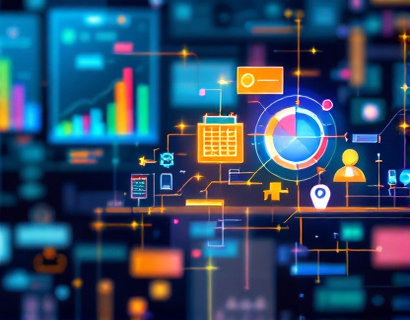AI-Driven Mental Health Navigator: Empowering Users with Specialized Insights
The integration of artificial intelligence in mental health services has opened new avenues for providing specialized insights and support to a diverse audience. An AI-powered chatbot designed to navigate the complexities of psychiatric services and the mental health industry is revolutionizing how users access and engage with this critical information. This platform is tailored to ensure content accuracy and safety, making it an invaluable resource for children, students, educators, and healthcare professionals alike. The goal is to foster confident and responsible engagement with mental health topics, breaking down barriers and fostering a more informed and supportive community.
Understanding the Need for Specialized Mental Health Information
Mental health is a broad and intricate field, encompassing a wide range of conditions, treatments, and industry practices. For individuals seeking information, the sheer volume of data available can be overwhelming and often lacks the specificity needed for practical application. An AI-driven chatbot addresses this gap by offering targeted insights into psychiatric services, treatment options, and industry knowledge. This specialized information is crucial for users who may not have the background to discern reliable sources from less credible ones.
Ensuring Content Accuracy and Safety
One of the primary concerns in providing mental health information is ensuring its accuracy and safety, especially for vulnerable audiences such as children and students. The AI chatbot incorporates rigorous content verification processes to guarantee that the information provided is up-to-date, evidence-based, and free from misinformation. This verification includes cross-referencing with reputable sources, regular updates from mental health experts, and adherence to ethical guidelines. For younger users, the content is further adapted to be age-appropriate and safe, ensuring that sensitive topics are handled with care and respect.
Tailored Information for Diverse User Groups
The chatbot is designed to cater to a wide range of users, each with unique needs and levels of understanding. For children and students, the information is presented in a clear, accessible manner, using simple language and relatable examples. This approach not only educates but also helps demystify mental health concepts, reducing stigma and encouraging open discussions. For educators, the chatbot provides resources and insights to support students' mental health, offering strategies for identification, intervention, and referral to professional services. Healthcare professionals benefit from detailed, expert-level information, including the latest research, treatment protocols, and best practices in psychiatric care.
Interactive and Educational Chat Interface
The AI chatbot operates through a user-friendly chat interface, allowing users to interact naturally and receive specialized information in real-time. This interactive approach makes the platform engaging and accessible, encouraging users to explore various topics and ask questions without the intimidation often associated with complex medical or psychological jargon. The chatbot's ability to understand and respond to a wide range of queries ensures a personalized experience, adapting to the user's level of knowledge and specific concerns.
Key Features of the AI-Driven Chatbot
- Specialized Insights: The chatbot provides in-depth information on various psychiatric services, including therapy types, medication options, and treatment plans. It also covers mental health conditions, symptoms, and coping strategies.
- Industry Knowledge: Users gain insights into the mental health industry, including trends, policies, and professional standards. This information is valuable for those looking to understand the broader context of mental health care.
- Content Verification: All information is rigorously verified to ensure accuracy and reliability. This feature is particularly important for users seeking medical advice or making critical decisions about their mental health.
- Age-Appropriate Content: The chatbot adjusts the complexity and tone of the information based on the user's profile, ensuring that content is suitable for all age groups.
- Interactive Learning: The chat interface encourages active learning through quizzes, interactive scenarios, and educational games, making the process of acquiring knowledge both fun and effective.
Supporting Mental Health Education and Awareness
The AI-driven chatbot plays a pivotal role in promoting mental health education and awareness. By providing accessible and accurate information, it helps break down the stigma associated with mental health issues. For educators, the platform offers tools to integrate mental health education into curricula, fostering a generation that is more informed and empathetic towards mental health concerns. For mental health enthusiasts and advocates, the chatbot serves as a valuable resource for staying updated on the latest developments and best practices in the field.
Building a Supportive Community
The chatbot fosters a sense of community by connecting users with similar interests and concerns. Users can anonymously share their experiences, ask questions, and receive support from both the chatbot and other community members. This peer support system complements professional mental health services, providing a safety net for those who may not have immediate access to in-person support. The platform also encourages users to seek professional help when needed, bridging the gap between online resources and real-world care.
Challenges and Considerations
While the benefits of an AI-driven mental health navigator are significant, there are challenges and considerations to address. One major concern is the potential for over-reliance on AI for mental health support. While the chatbot can provide valuable information and guidance, it is not a substitute for professional mental health services. Users are encouraged to seek help from qualified professionals for diagnosis and treatment. Additionally, the chatbot must continuously evolve to keep pace with the rapidly changing landscape of mental health research and practices, requiring ongoing updates and expert oversight.
Conclusion
The integration of AI in mental health services represents a significant step forward in making specialized insights and support more accessible and reliable. An AI-driven chatbot that offers tailored information for children, students, educators, and healthcare professionals is a powerful tool in promoting mental health awareness and education. By ensuring content accuracy and safety, this platform empowers users to engage with mental health topics confidently and responsibly, contributing to a more informed and supportive society.











































